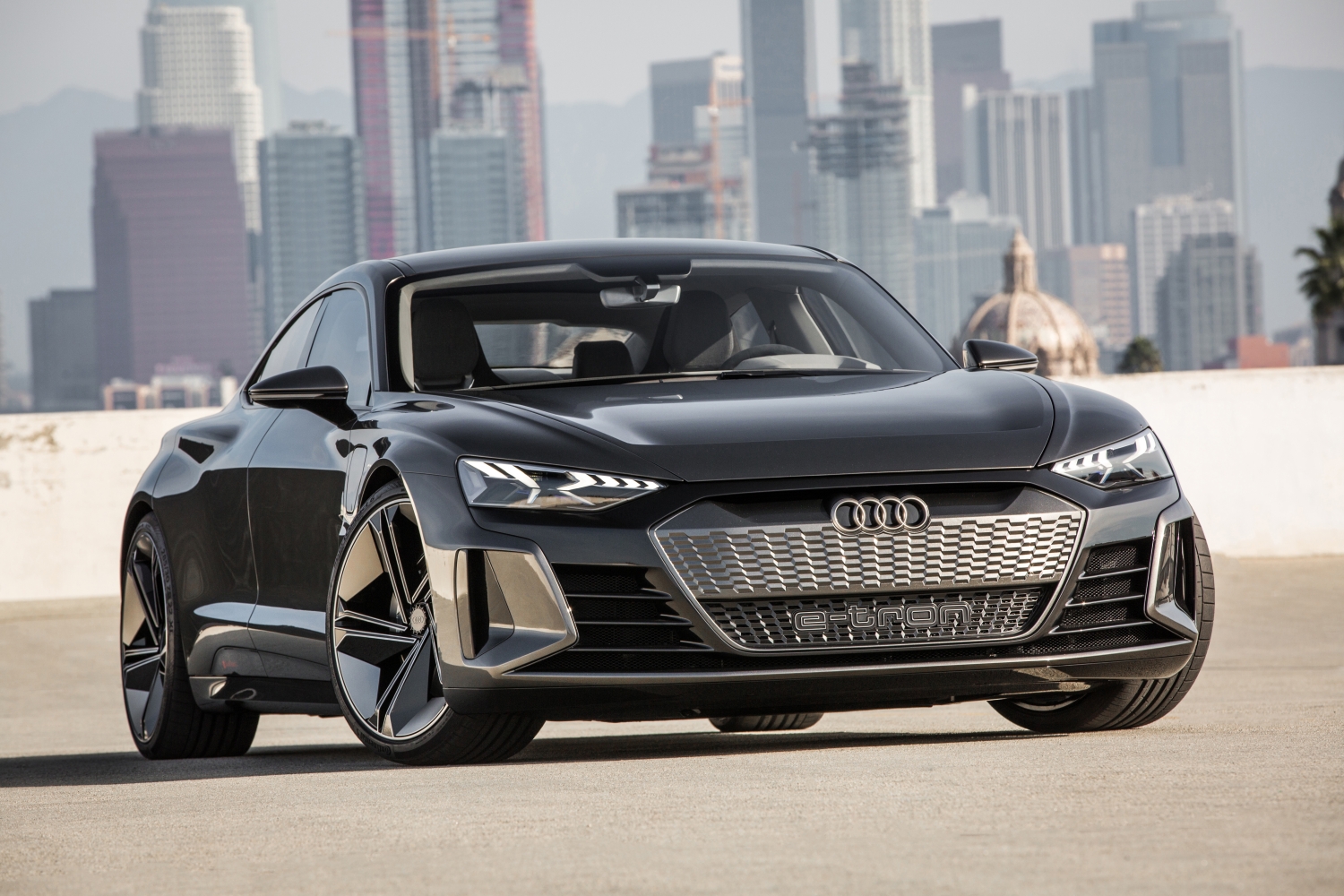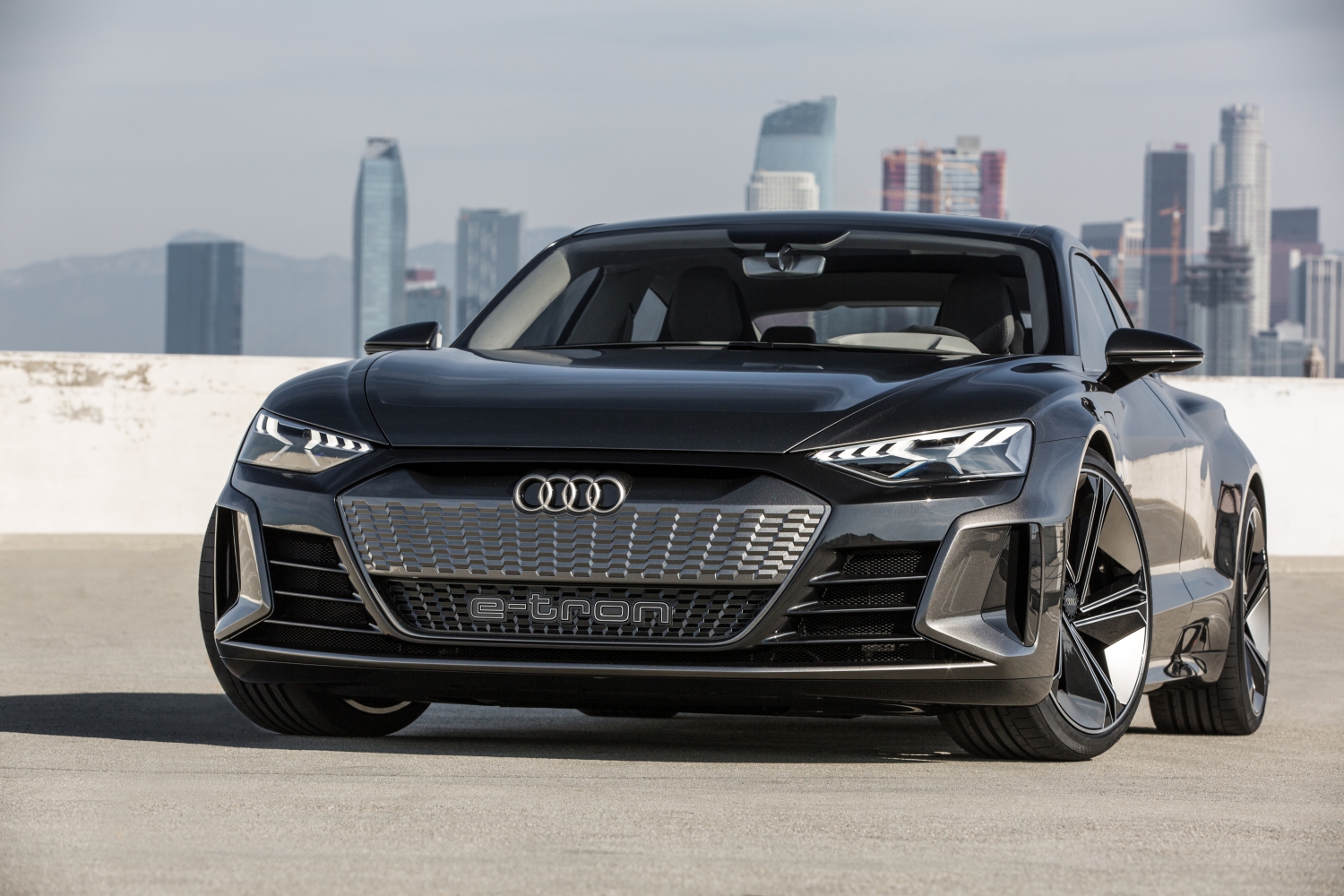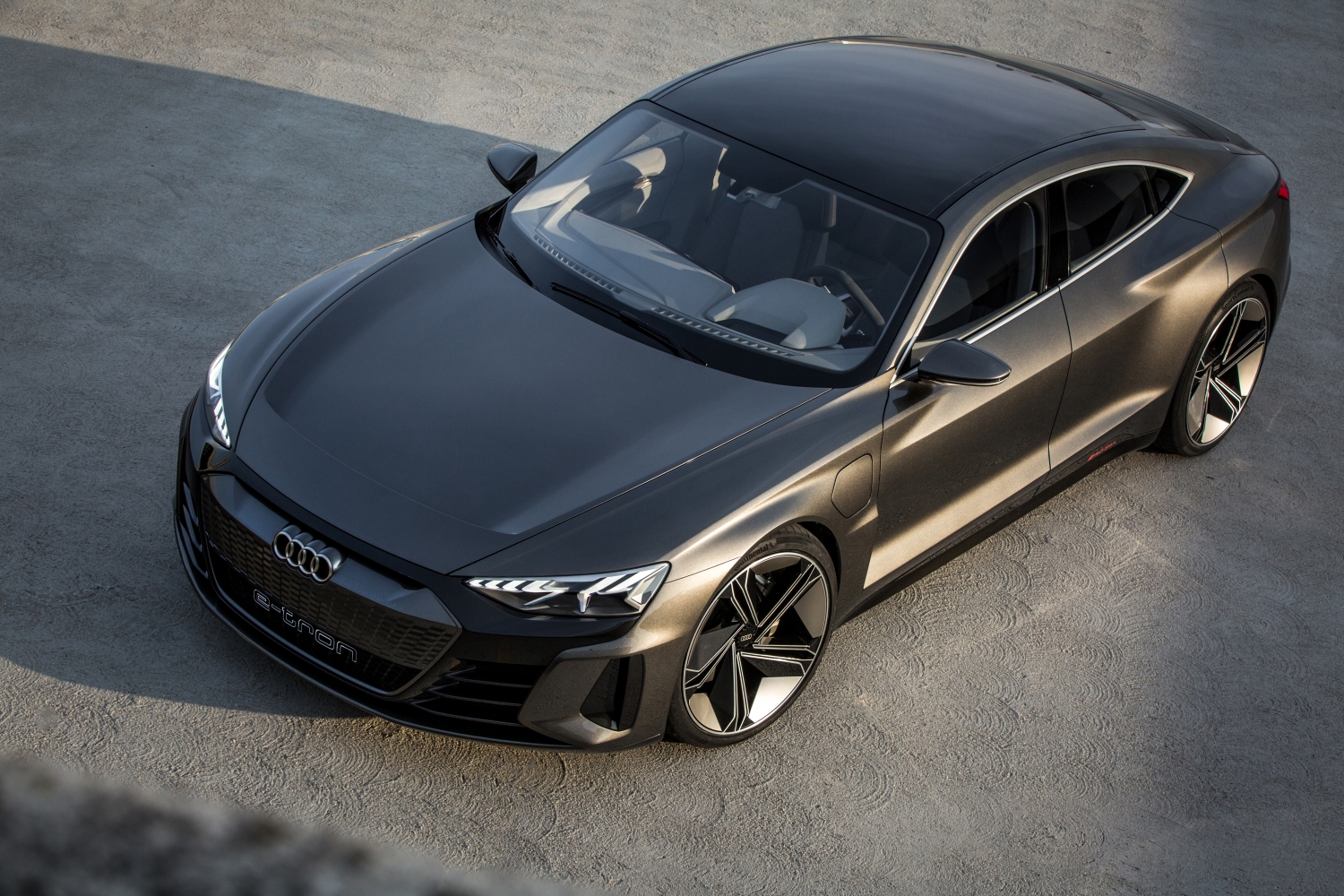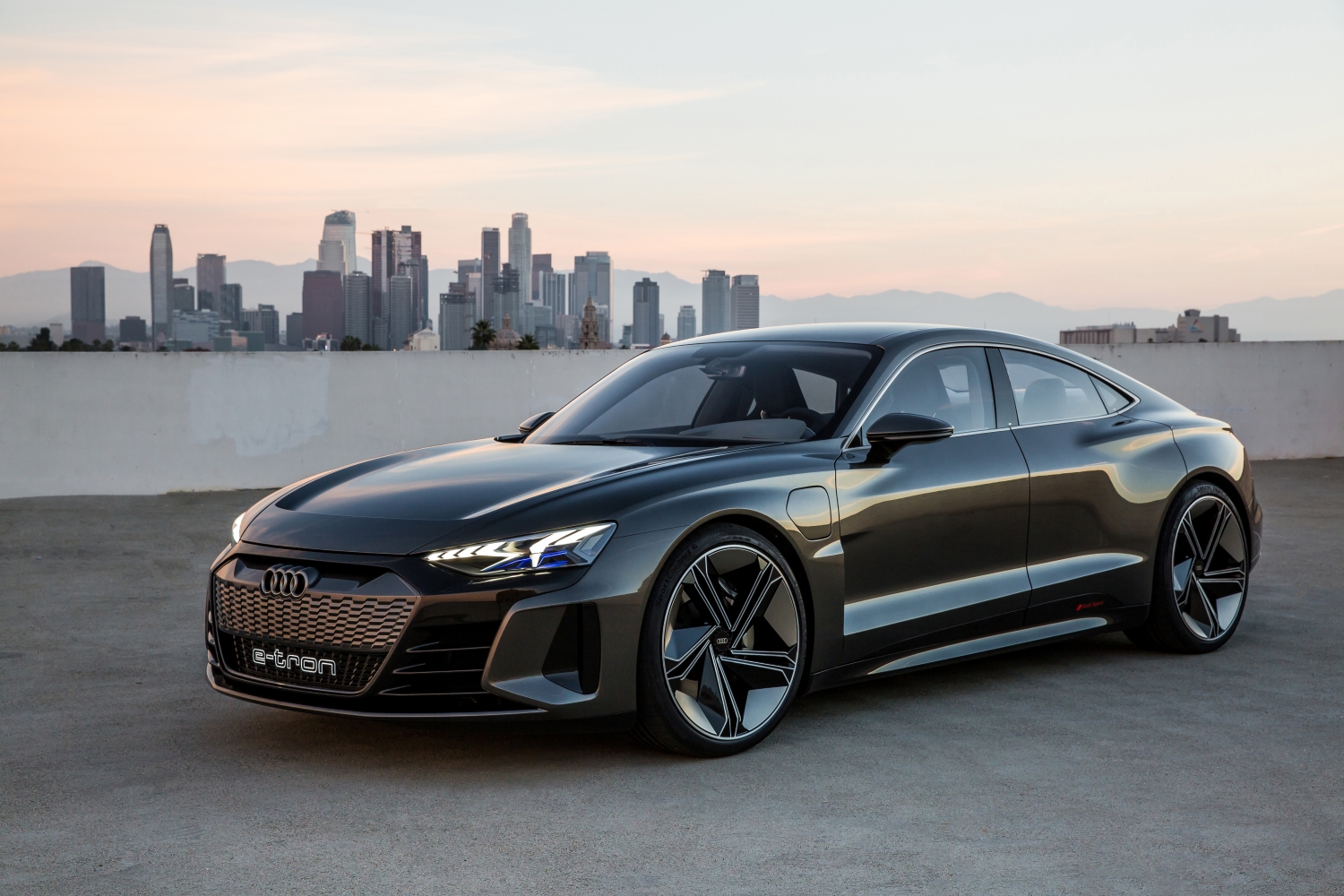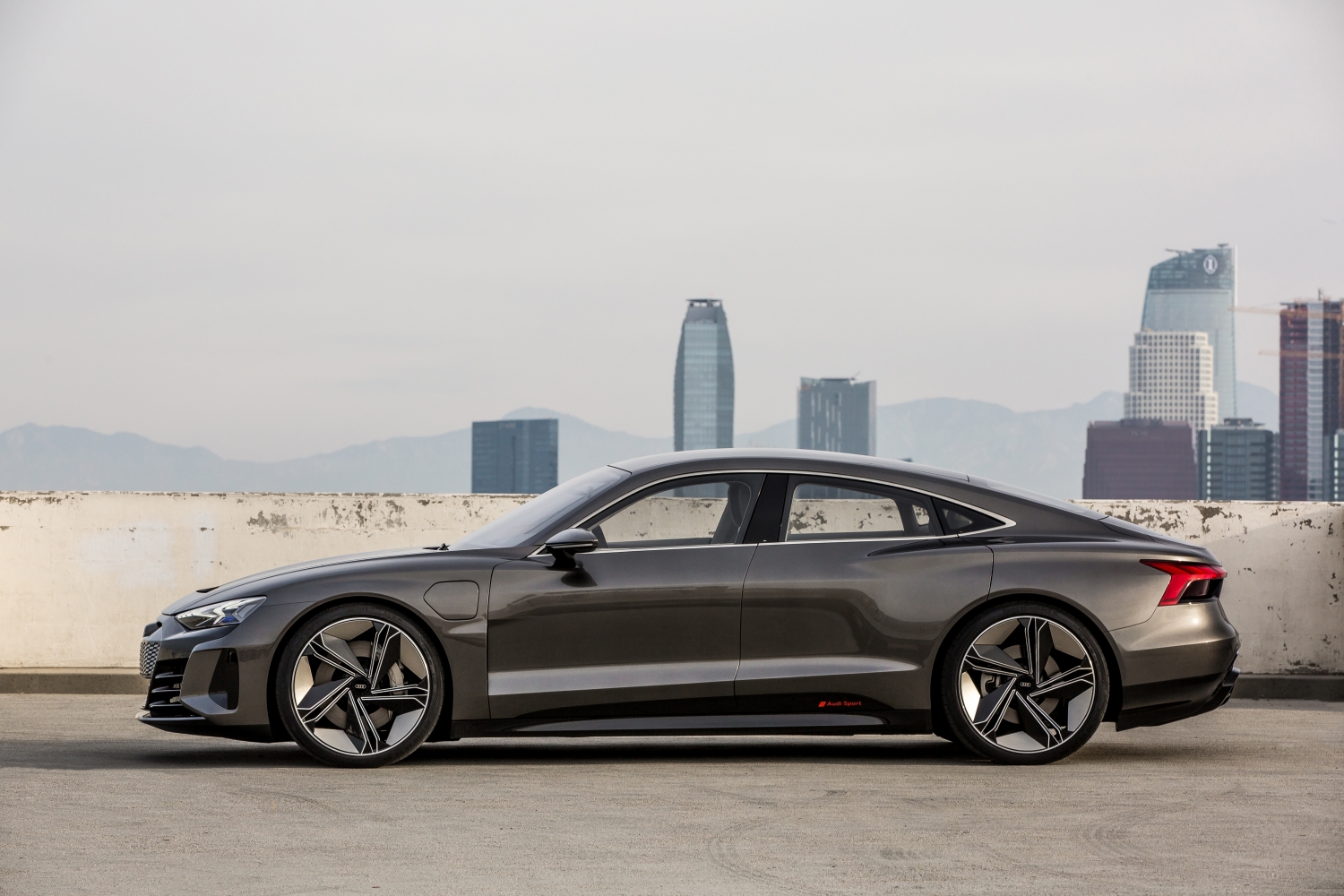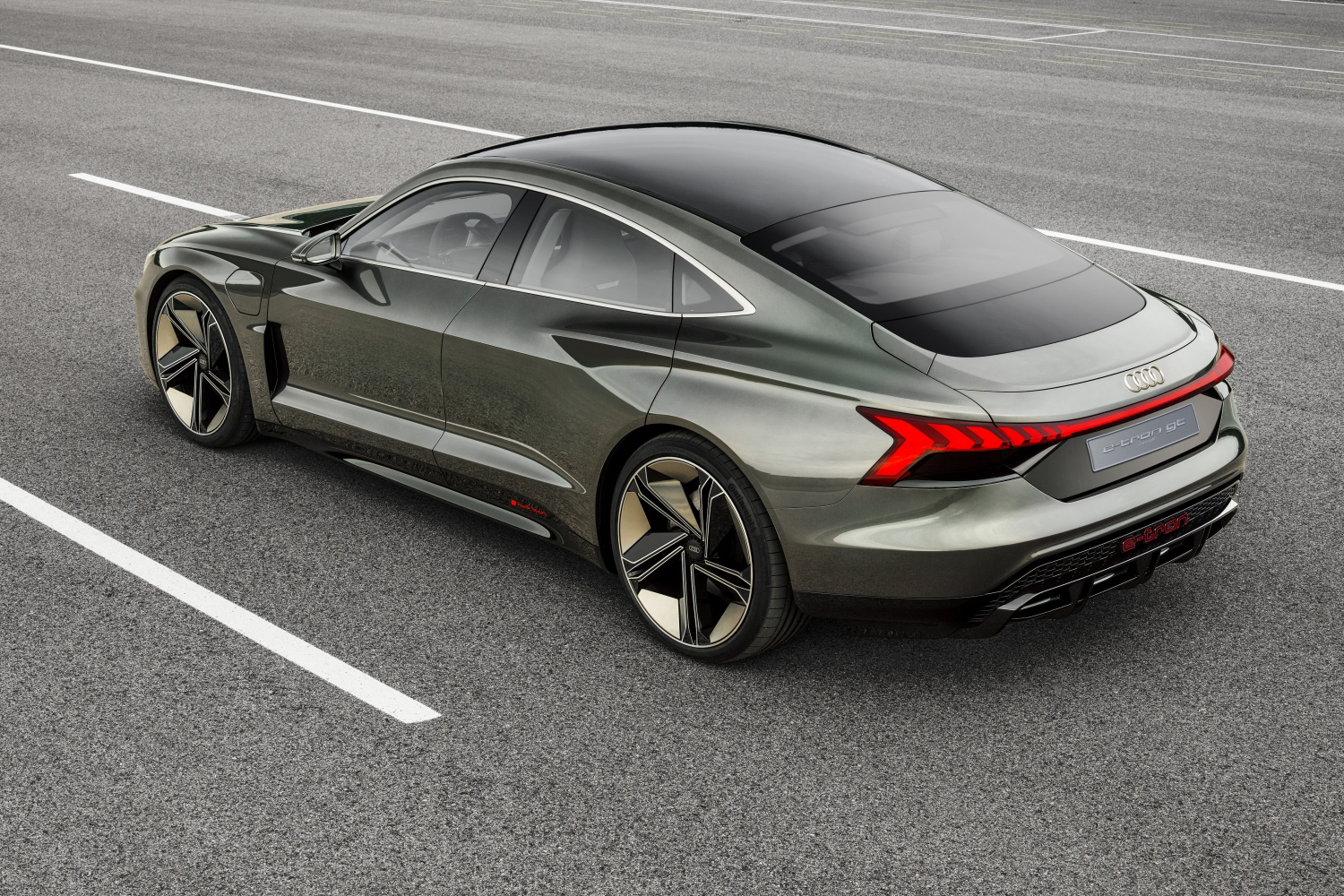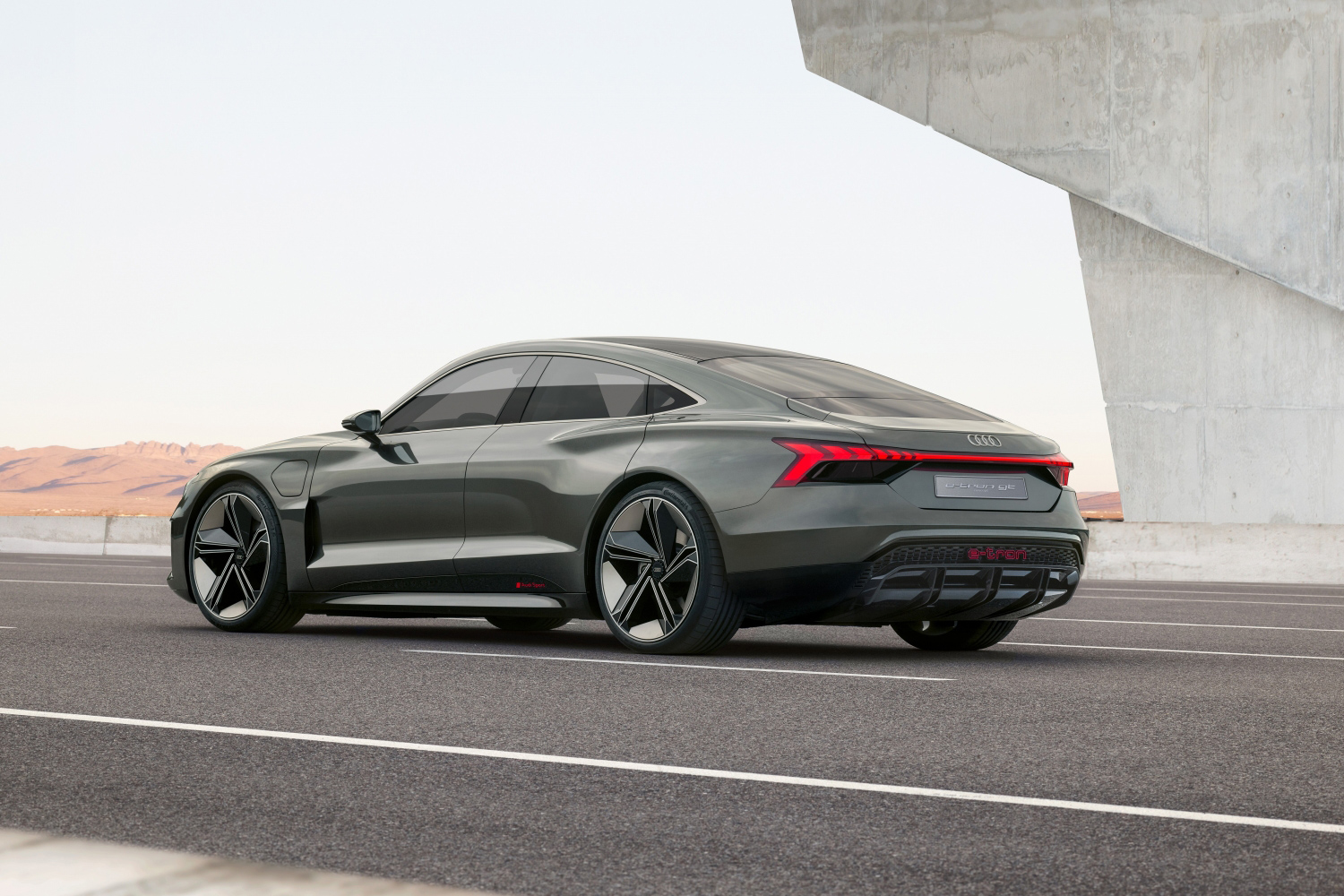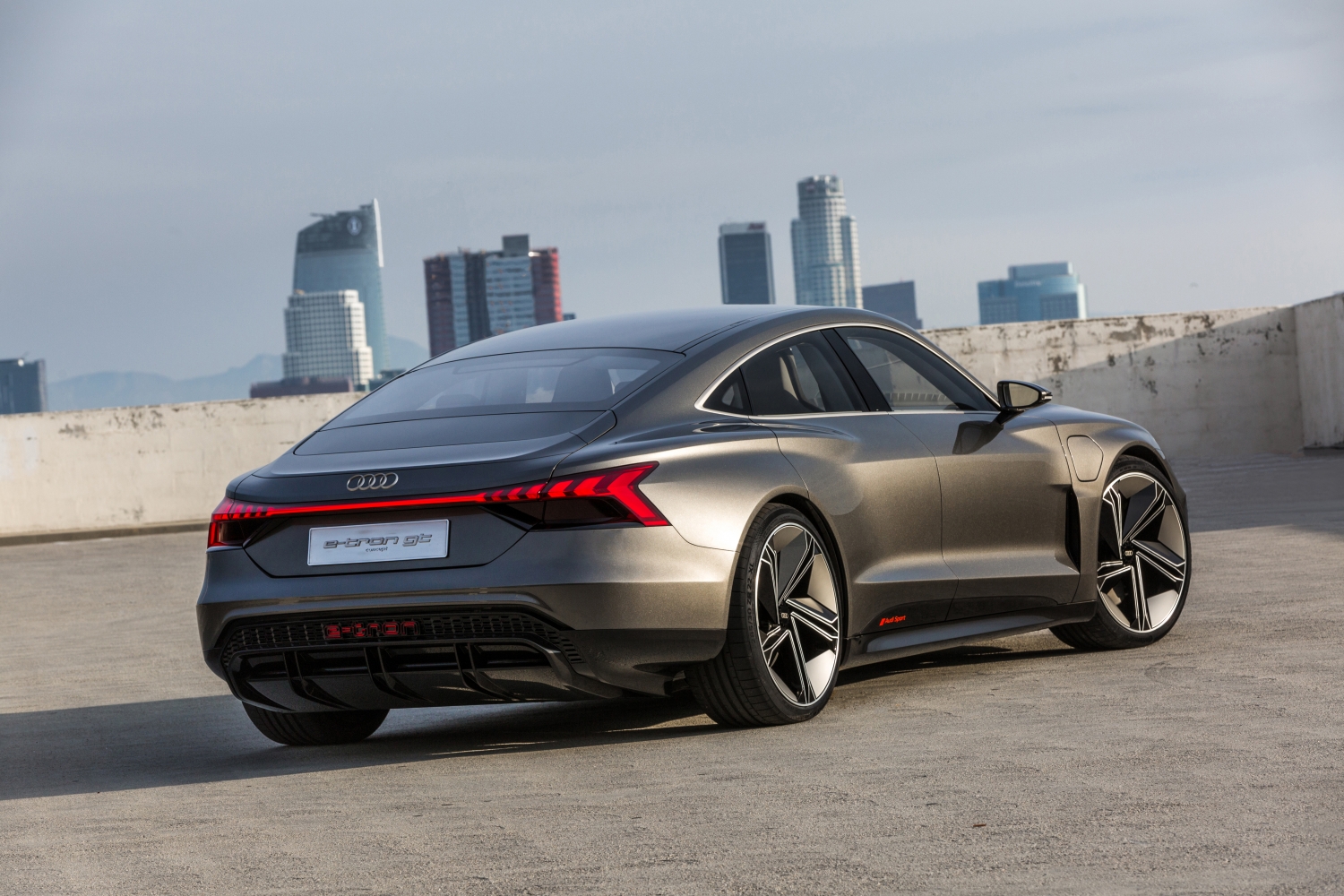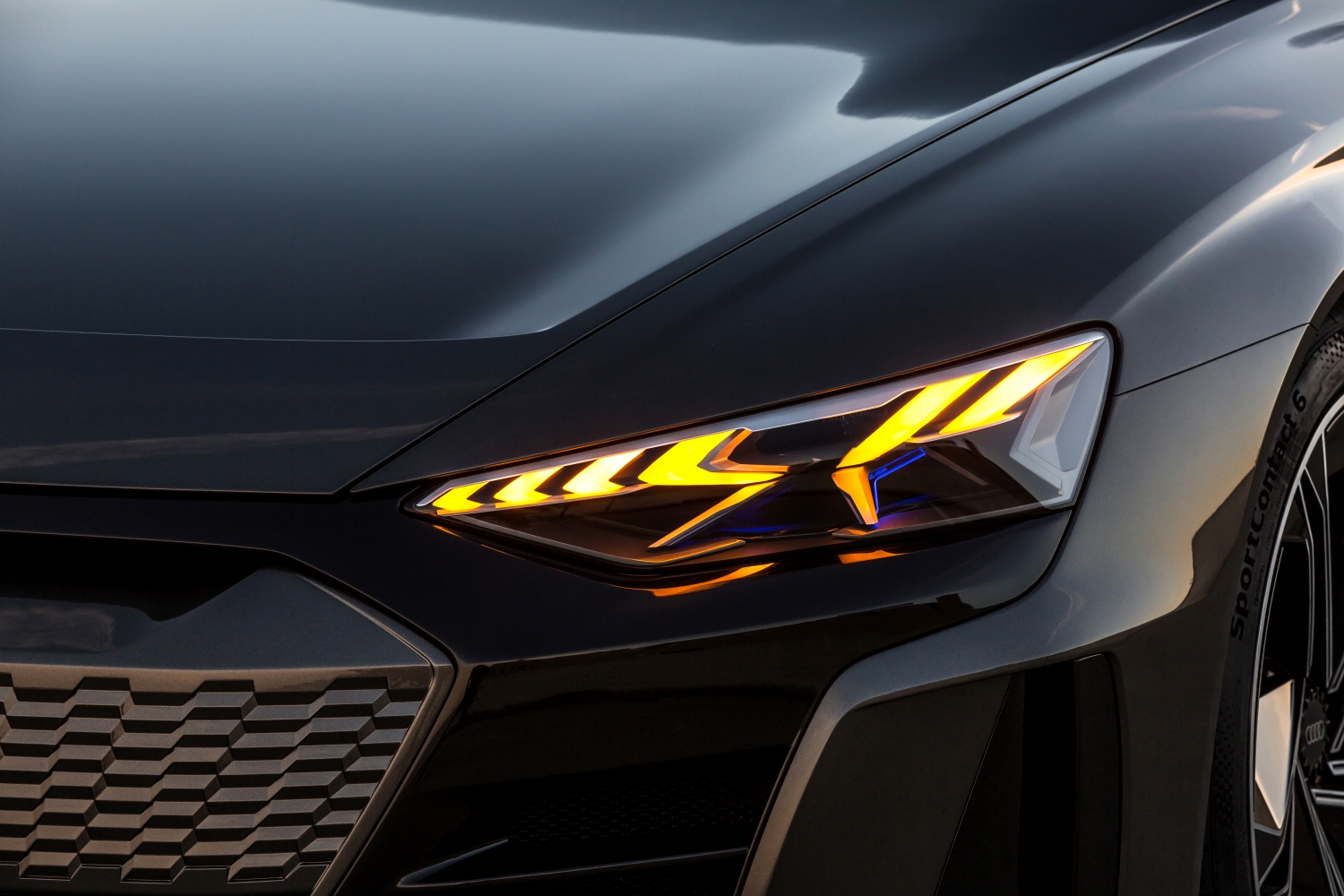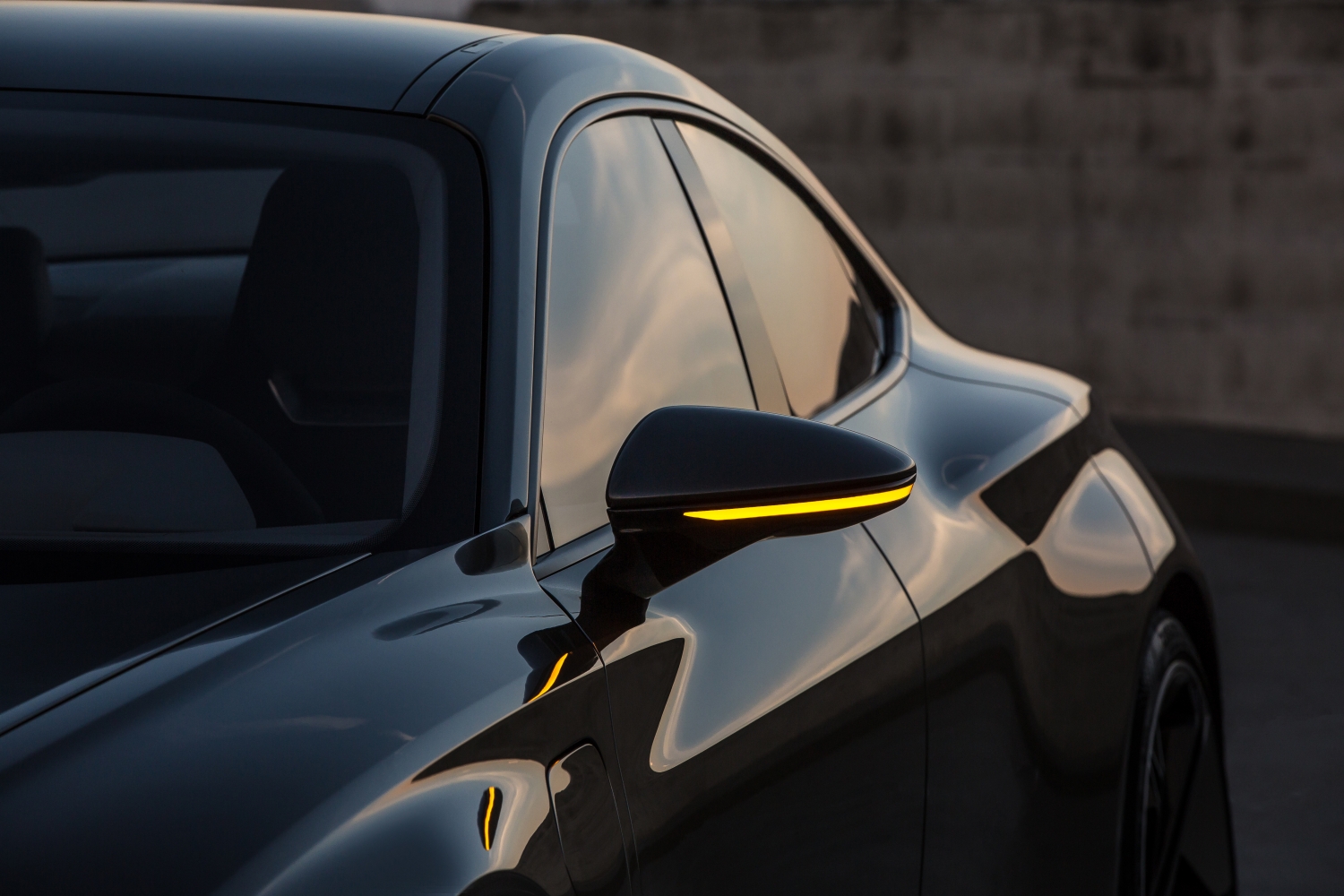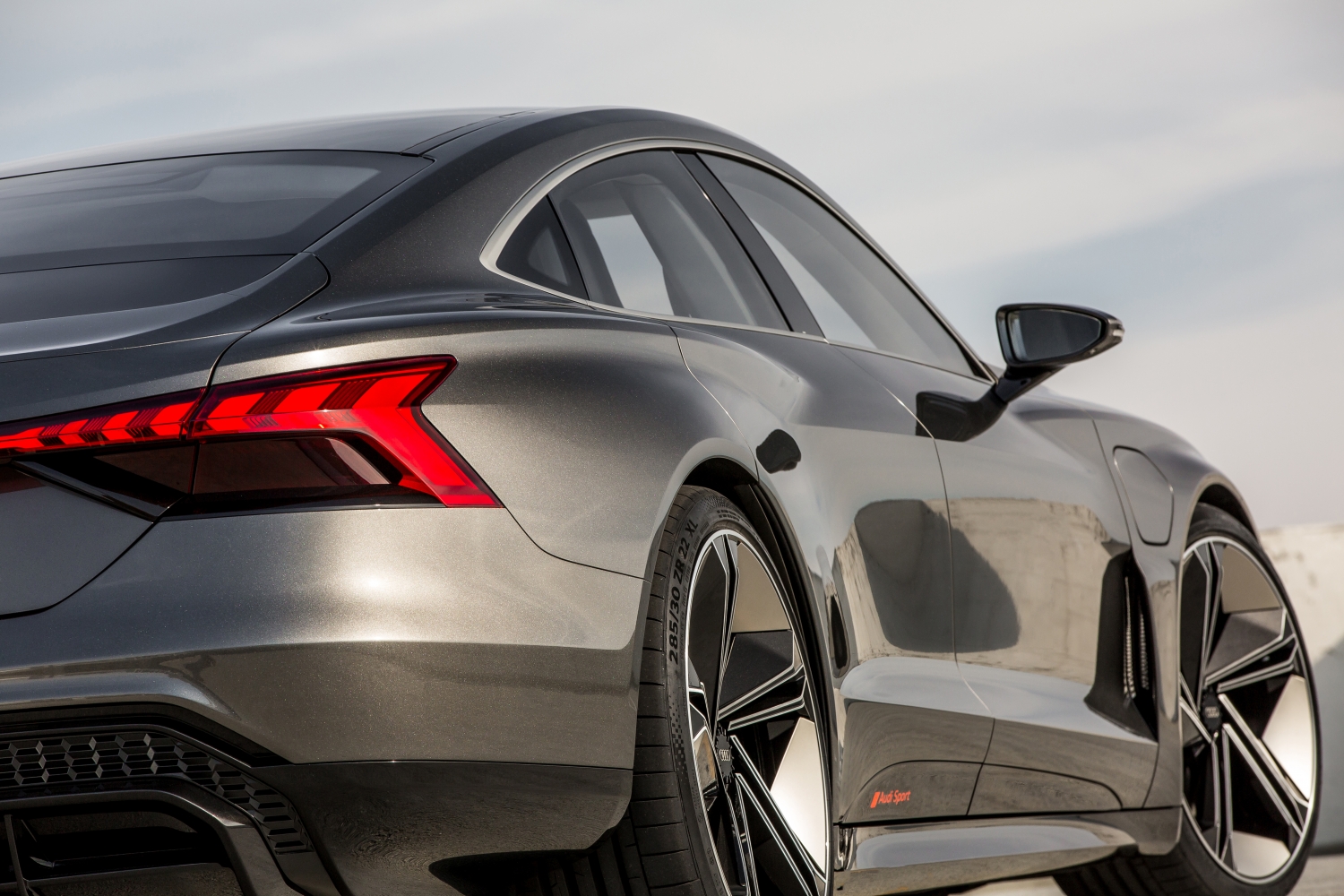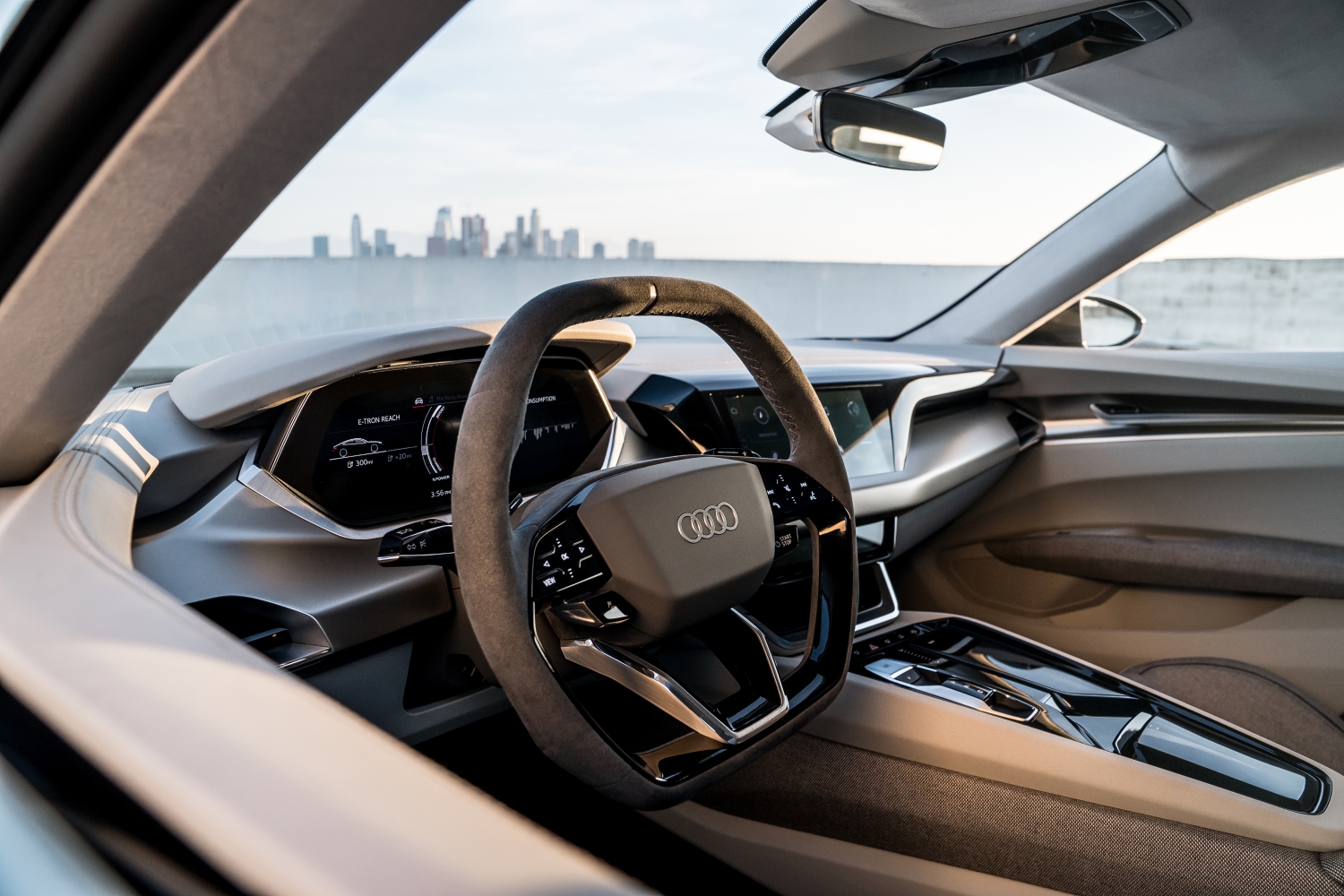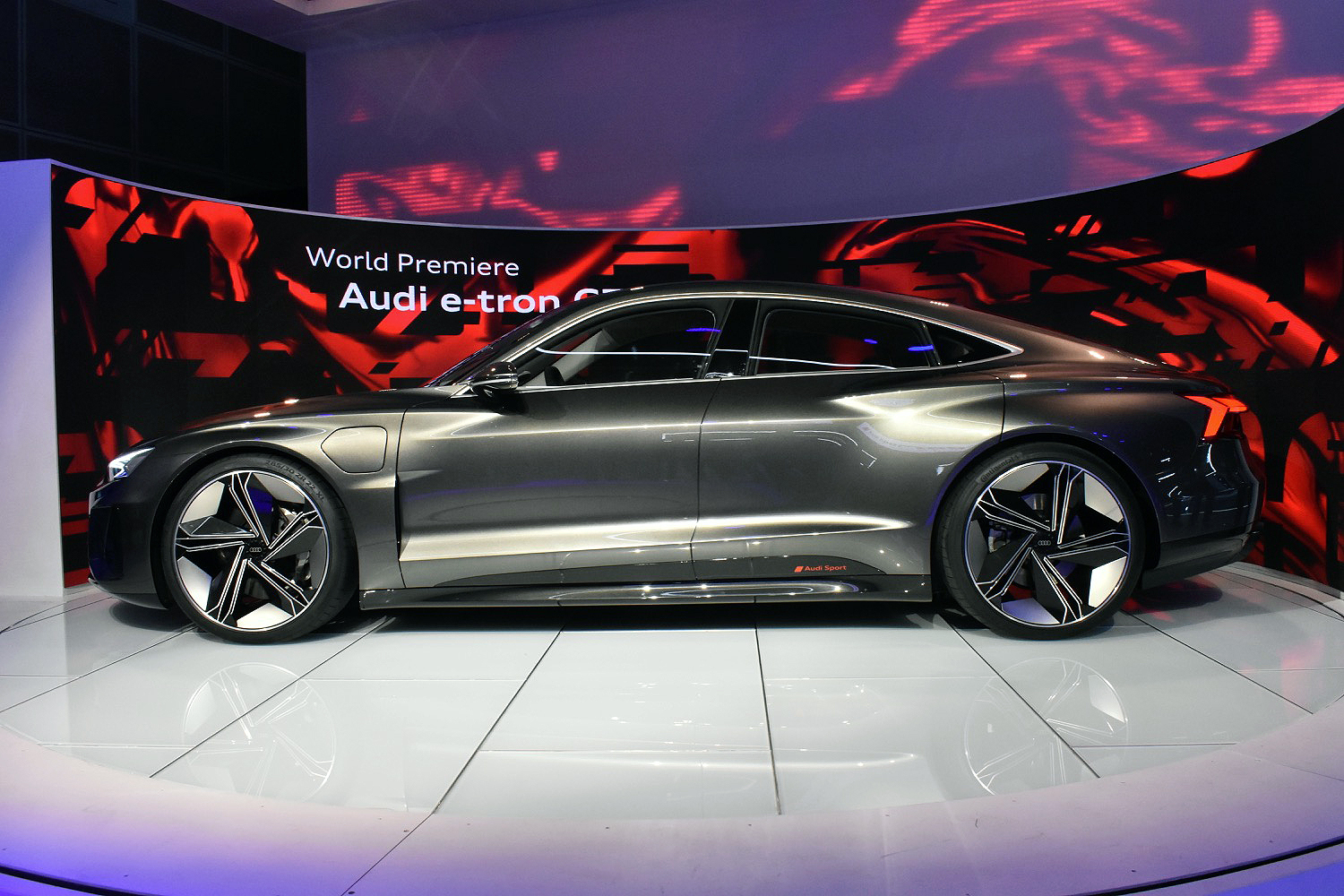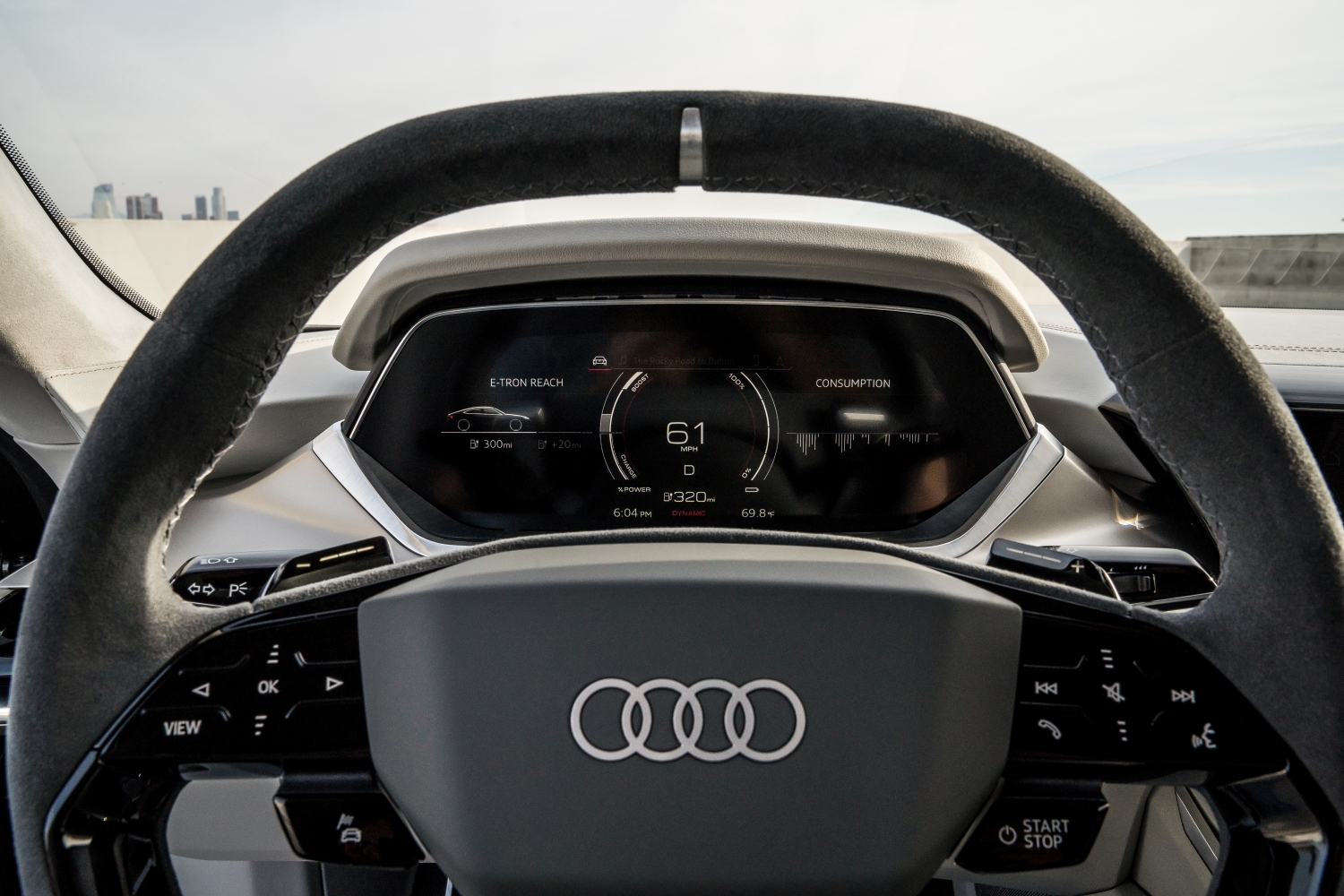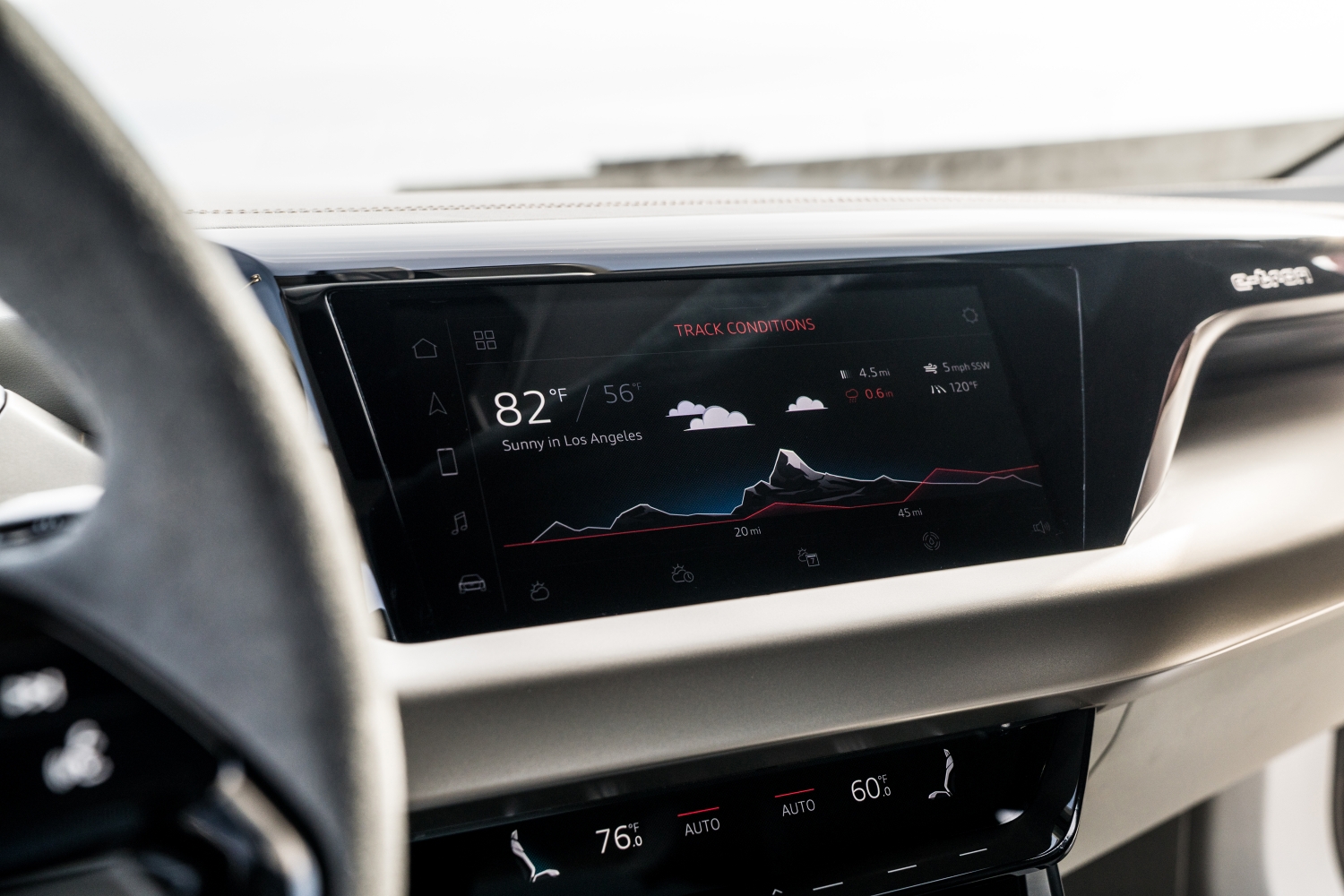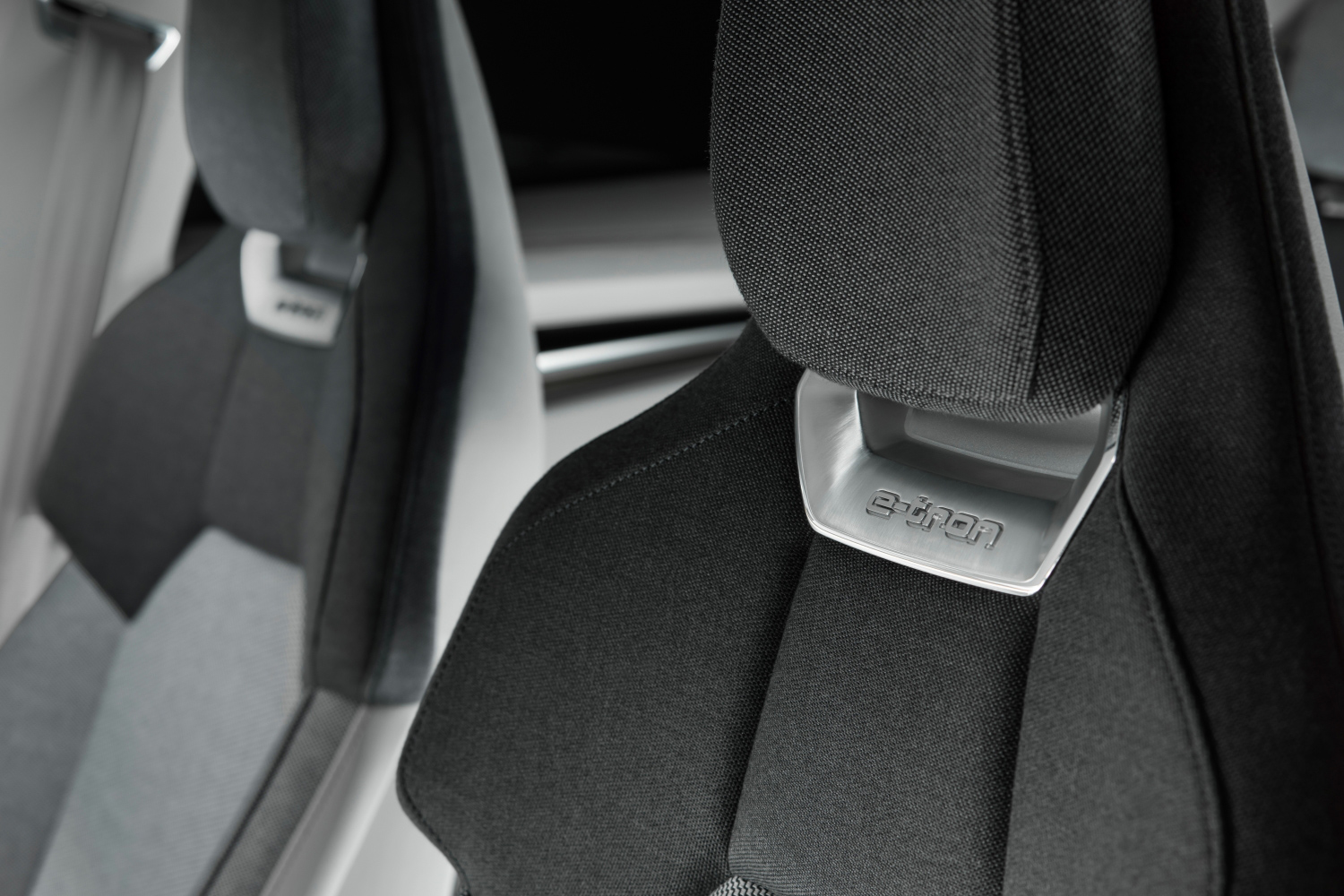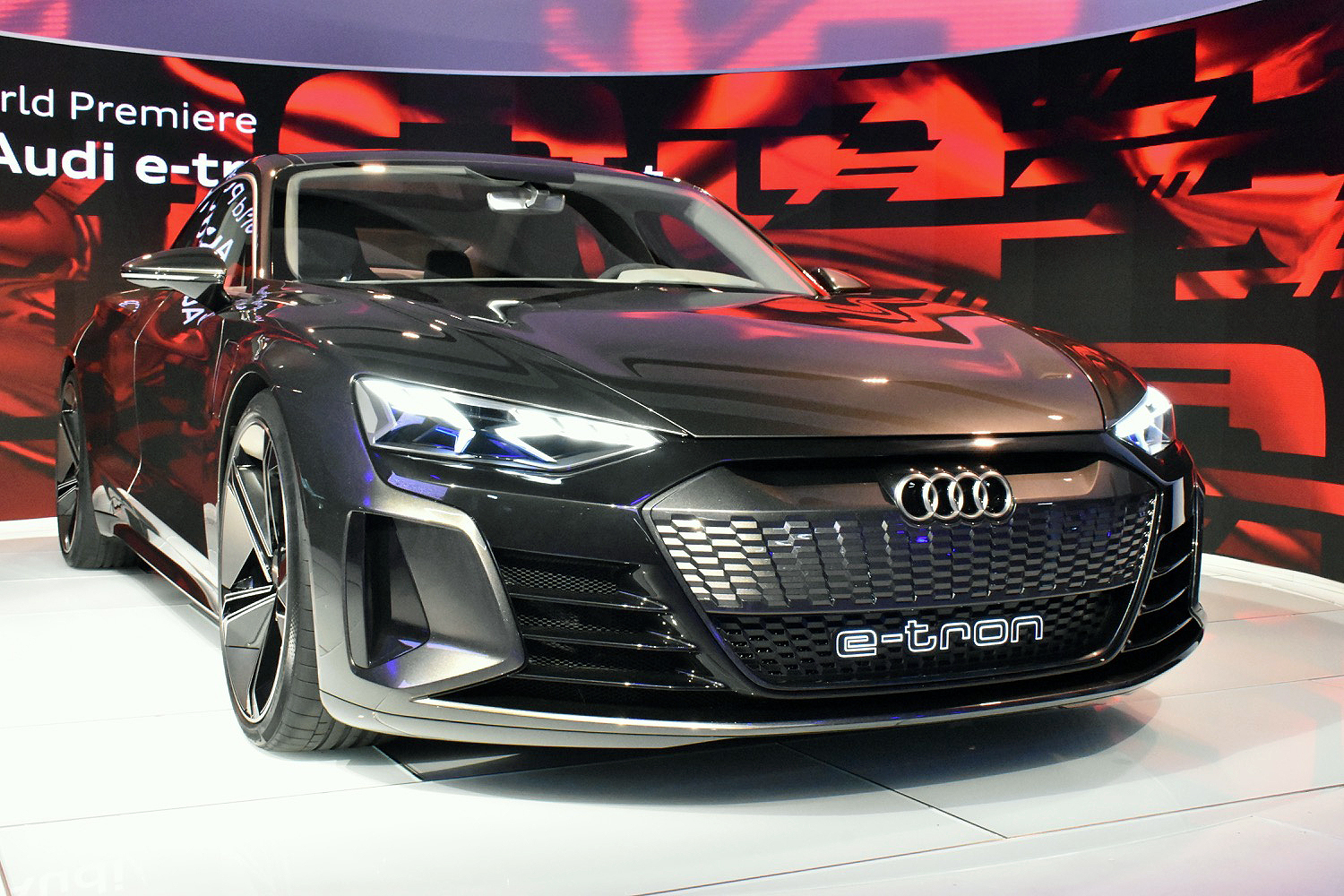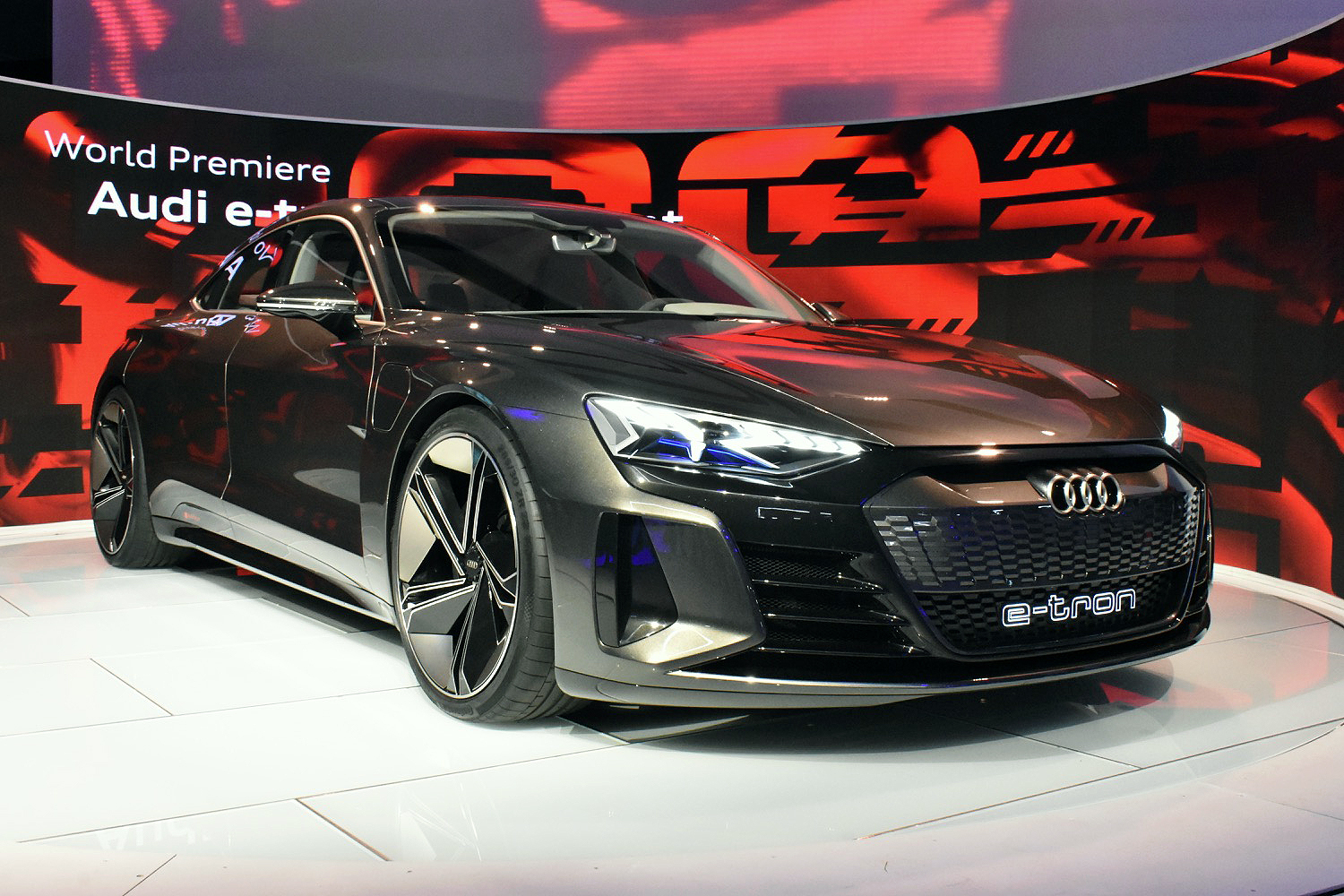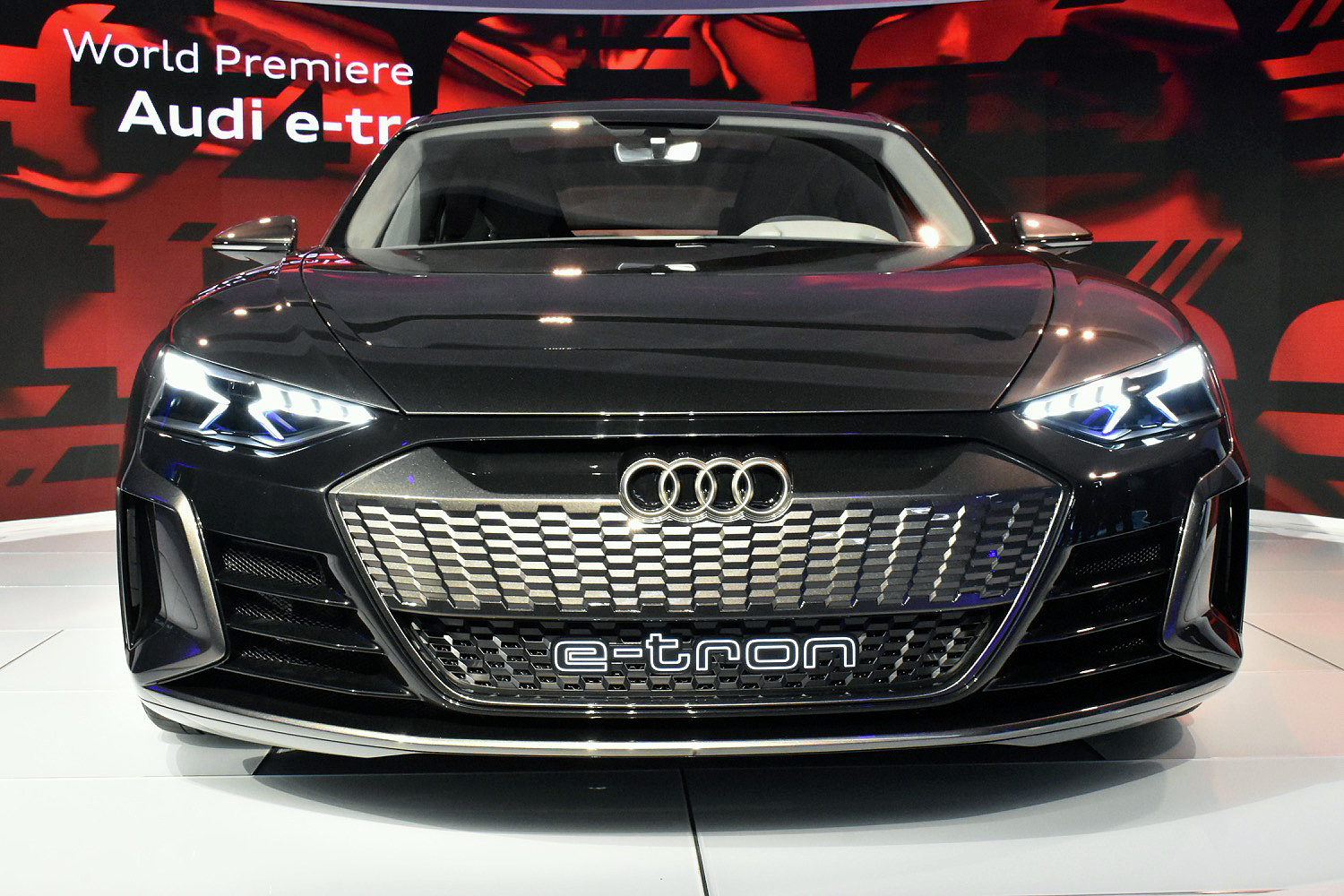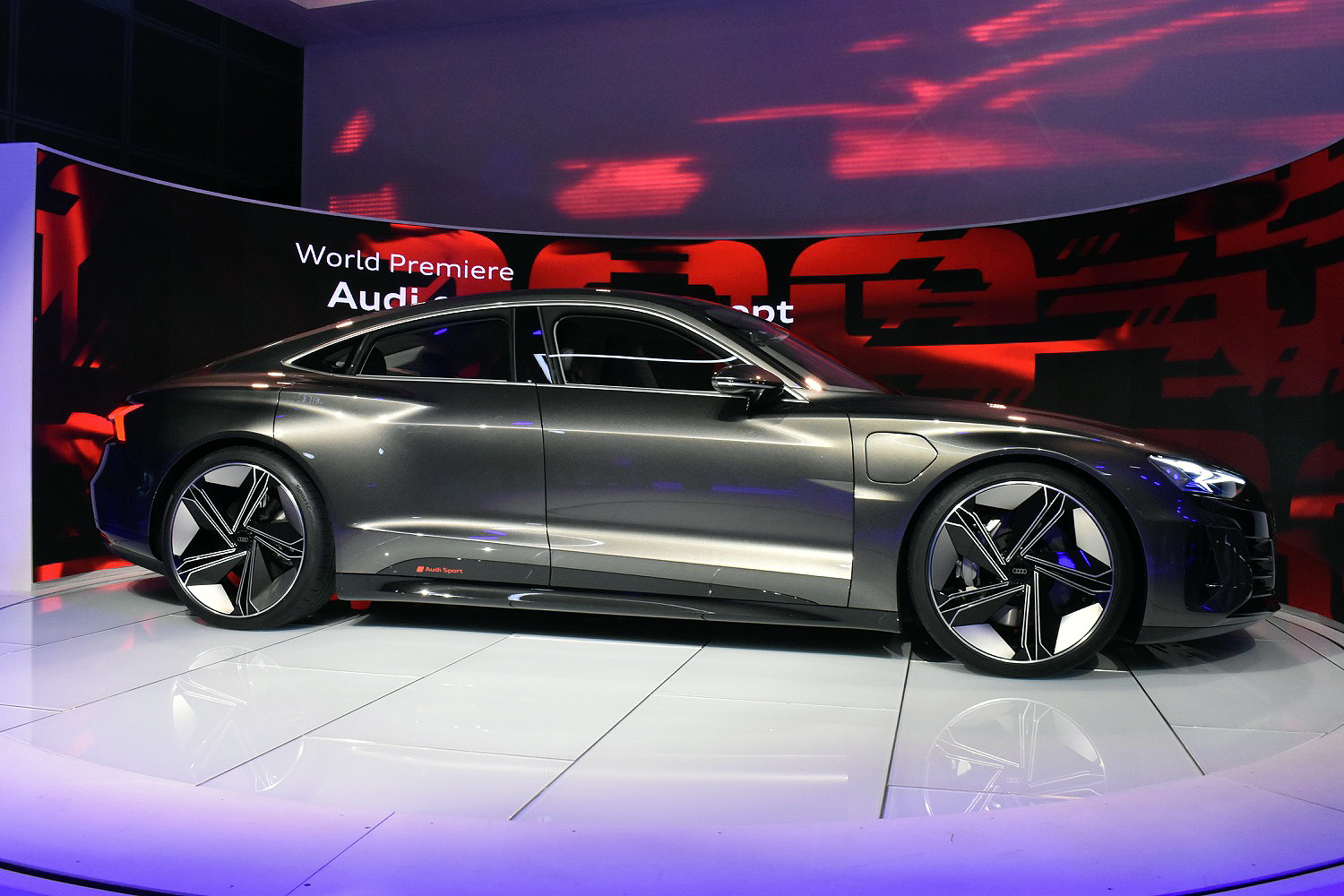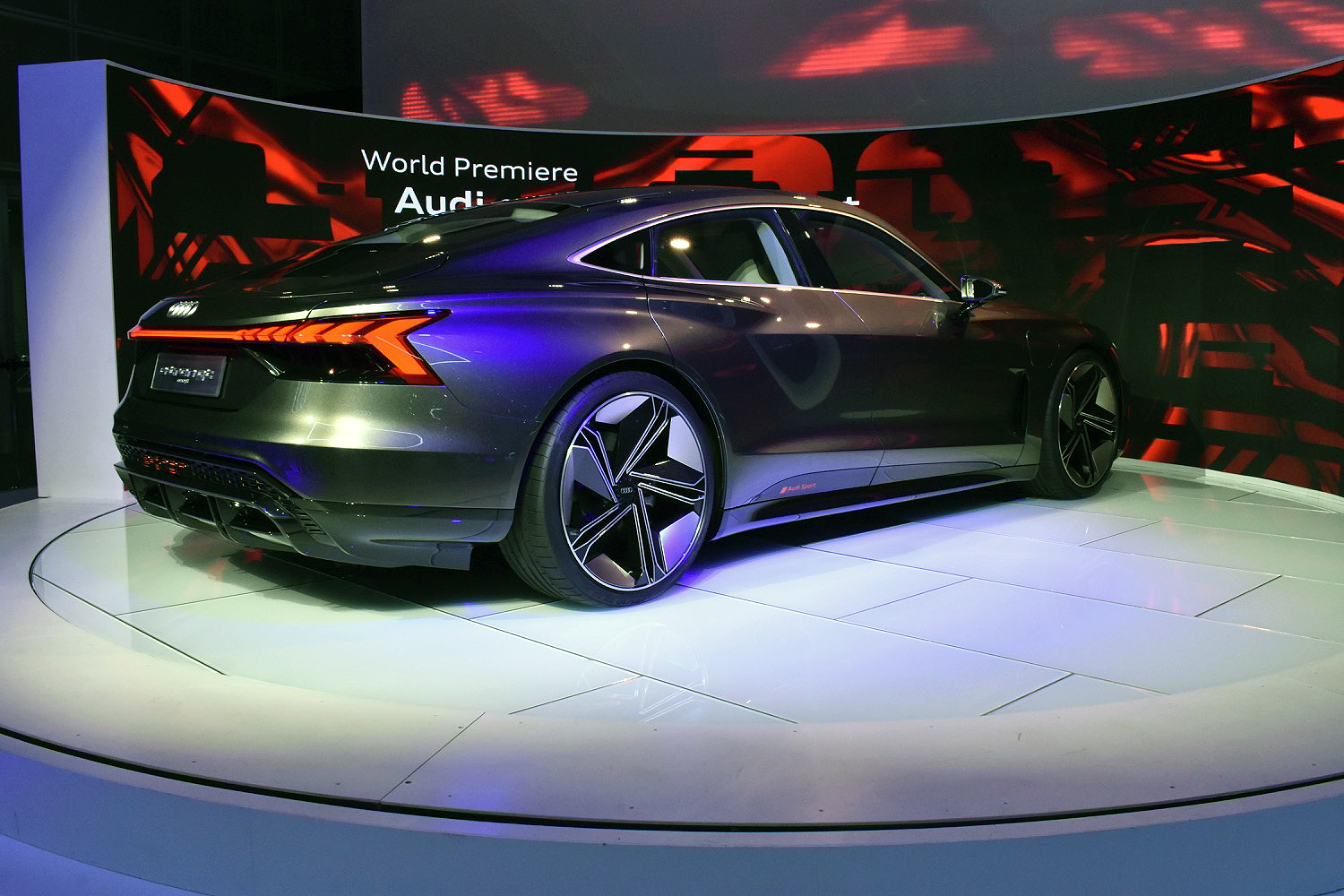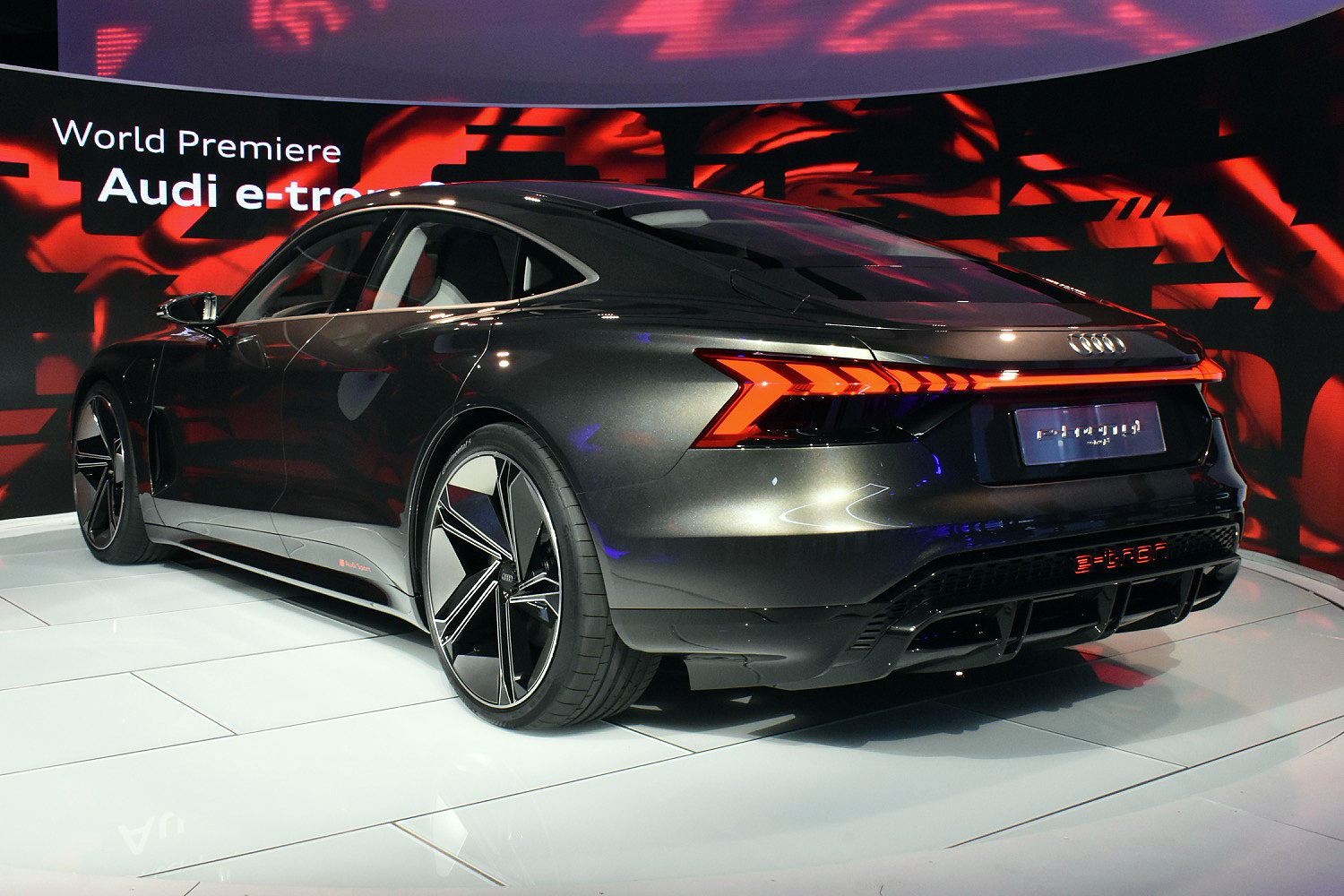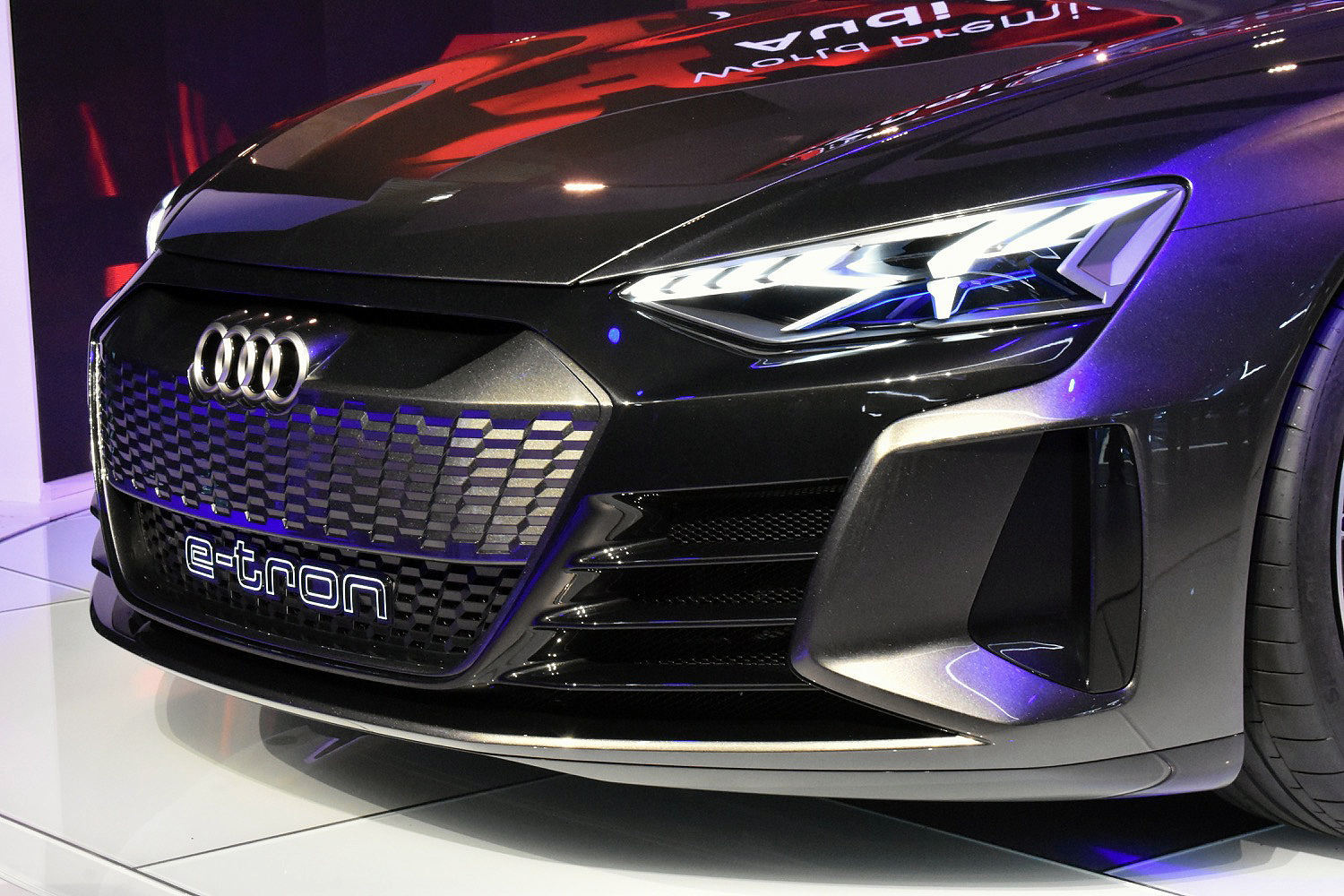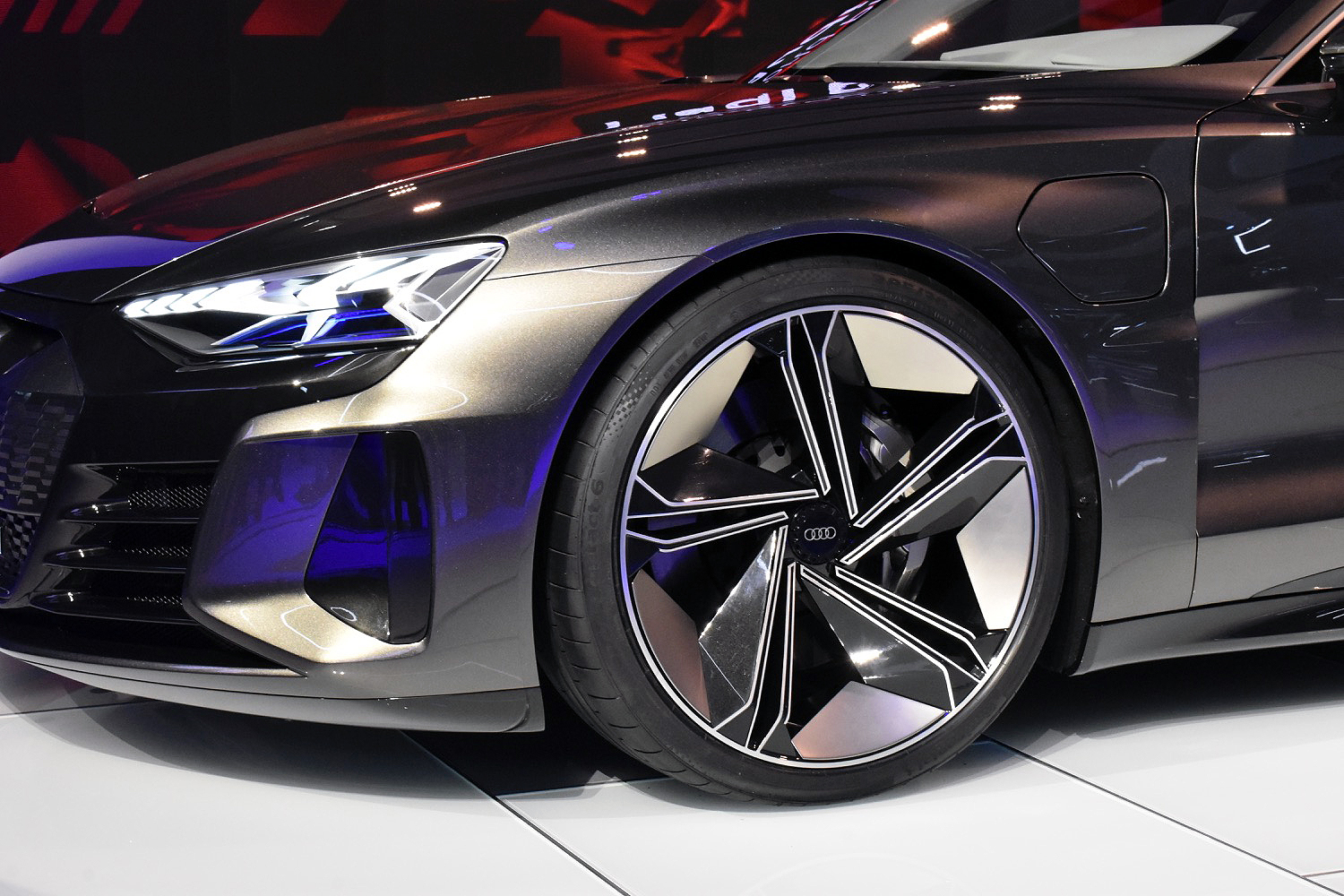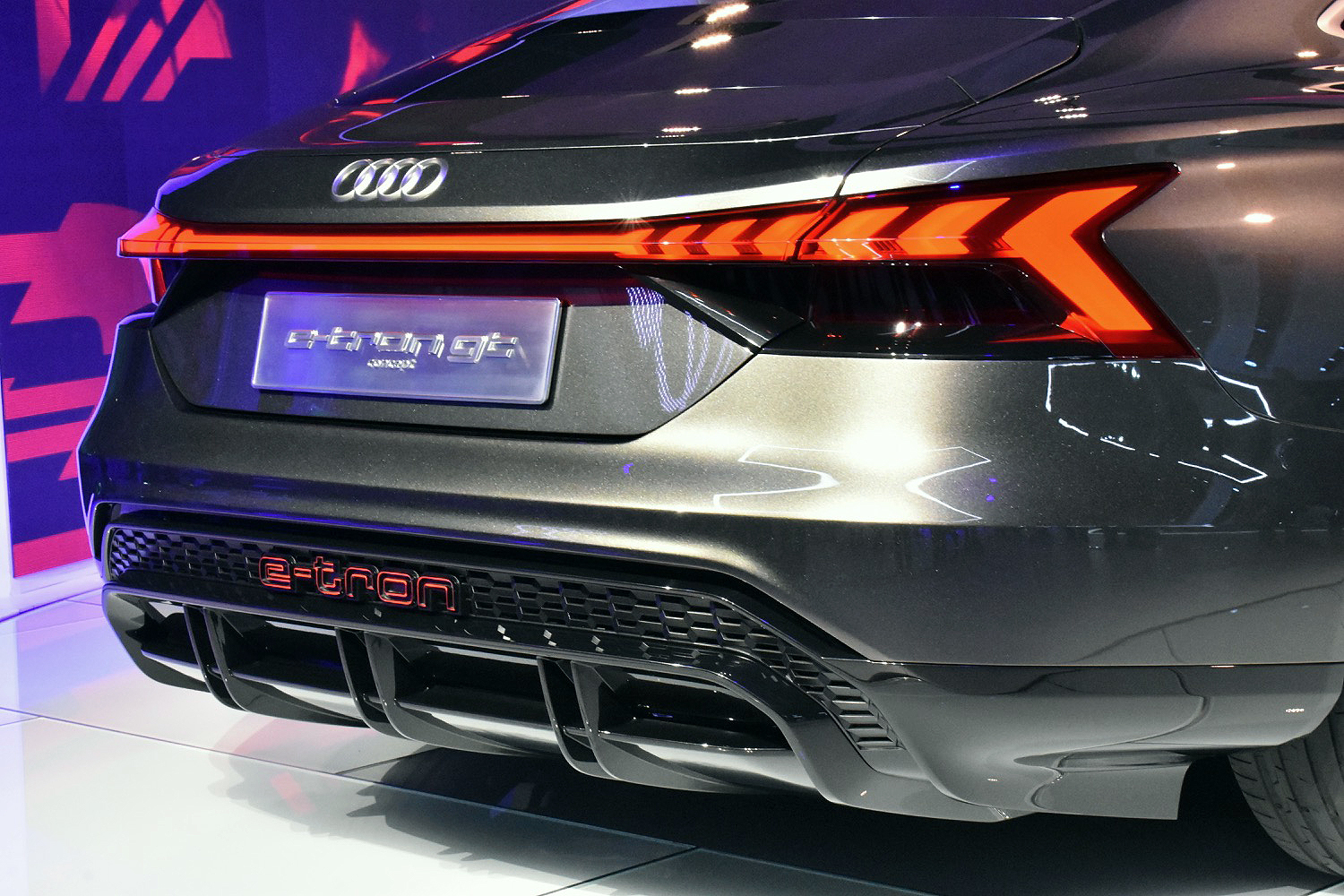We’ve often heard rumors of a battery-electric Audi Sport model; this is it.
The Audi E-Tron GT concept made its public debut at the 2018 Los Angeles Auto Show, but Digital Trends traveled to the firm’s home town of Ingolstadt, Germany, several weeks before the event to get a behind-the-scenes look at the design study, and to gain insight on what it means for Audi Sport’s future.
“We have never done a show car as close to series production as this,” Enzo Rothfuss, Audi’s head of interior design, told us with an unconcealable smile. Marc Lichte, the brand’s charismatic design boss, echoed his comments. That means what you see displayed under the bright lights at the annual Los Angeles show is what you’ll get in showrooms in almost exactly two years’ time.
Related Stories
- E-tron GT concept is the latest volley in Audi’s electrified offensive
- From salt flats to sand dunes, adventuring off-grid in Audi’s electric E-Tron
- Riding along in Audi’s e-tron, the electric SUV born to slay Teslas
When it comes to electric cars, luxury automakers are putting an unprecedented focus on the SUV segment. It’s not a coincidence that Audi’s first series-produced EV, the E-Tron, will arrive as a people-mover rather than as a sexy coupe or a low-slung sedan. It’s the body style that solves many of the packaging problems engineers encounter while trying to install a bulky battery pack in a car, and it’s in hot demand in key markets around the world like the United States and China. That doesn’t mean the sedan as we know it will go the way of the VCR.
“There are some people who want to have low cars,” Lichte pointed out. “Doing a low, sporty car with a big battery pack is a big challenge. There are not so many people who can do it,” he added. Audi chose to join forces with sister company Porsche instead of developing the car from scratch. The E-Tron GT is closely related to the upcoming Porsche Taycan under the sheet metal. The two sedans share a basic platform, a 96-kWh lithium-ion battery pack, two electric motors, and numerous chassis components. Everything else is Audi-specific. Members of the development team regularly chat with their colleagues at Porsche to ensure the two cars don’t overlap.

From a design standpoint, the E-Tron GT blazes the path that Audi’s other high-performance electric cars will follow with honeycomb-shaped inserts in the grille and a full air diffuser integrated into the rear bumper. Andreas Mindt, Audi’s head of exterior design, pointed out that his team chose not to add trim shaped like an exhaust outlet because it was important to keep the GT as authentic as possible. He also noted the black accents on the front fascia significantly facilitate the task of integrating the sensors required for semi-autonomous and autonomous driving. This concept doesn’t drive itself, that is not its calling in life, but Mindt’s team is already looking ahead. “As designers, we have to think about what comes next,” he explained.
If you ask us, the GT’s stance is its most striking design feature; photos and videos don’t do it justice. Designers trimmed the overhangs, nipped the doors into the body, and punched out the wheel arches. The concept is about an inch and a half lower than the A7 even though it sits on a battery pack the size of a mattress. These styling cues make it look fast even when it’s not moving. LEDs on both ends give it a high-tech appearance at night.
The GT’s stance is its most striking design feature; photos and videos don’t do it justice.
The interior, like Moby, is 100% vegan and damn proud of it. Audi upholstered the four seats with recycled cloth and cleaned up the planet’s oceans by making the floor mats with discarded fishing nets. Rothfuss explained Audi will offer leather and Alcantara in the foreseeable future, he predicts buyers will continue asking for so-called classic materials, but he expects demand for an interior not made with animal parts will spike in the coming years.
The latest generation of Audi’s touchscreen-based infotainment system is nestled in the dashboard. Already seen in the Q3, it’s a single-screen variant of the intuitive, dual-screen MMI Touch Response software found in bigger models. “We will have the dual-screen setup in the big, luxurious cars and offer the single-screen solution in our sporty and compact models,” Rothfuss told us. He then pointed to the steering wheel, which is flat on the top and on the bottom. The design was chosen because it gives the driver an unobstructed view of the head-up display. It will spread to every electric Audi model in the coming years.
The 96-kWh battery pack holds enough electricity to deliver about 250 miles of range on the European testing cycle. It zaps a pair of electric motors – one over each axle – into motion. They deliver 590 horsepower, enough to send the GT from zero to 62 mph in a brisk 3.5 seconds and, if you have enough pavement at your disposal, from zero to 124 mph in 12 seconds. Lichte assured us the powertrain can deliver this neck-snapping acceleration more than 10 times in a row without going into lock-down mode in order to preserve the battery pack. To make that possible, every part of the powertrain is cooled.
The interior, like Moby, is 100% vegan and damn proud of it.
The GT wasn’t made for the drag strip, though. It’s a high-speed freeway cruiser. That means driving fast – at least in Germany, where part of the freeway network has no speed limit – and traveling fast instead of sitting on the side of the road while electricity trickles into a nearly-empty battery pack. To that end, the GT boasts an 800-volt charging system that fills 80 percent of the pack’s capacity in under 20 minutes. Alternatively, Audi will offer a wireless charging option will be markedly slower but considerably more convenient. Buyers will simply need to align the car with a charging pad installed in their garage and tap on the touchscreen to start the charging process.
Inside, outside, and under the sheet metal, the Audi E-Tron GT caught our eye because it’s much more realistic than the average concept car. It wasn’t built merely to turn heads on the auto show circuit, though it will move plenty of vertebrae in Los Angeles. It’s also a clear statement of intent, an accurate preview of the German firm’s third series-produced electric model. The first one is the recently-unveiled E-Tron, which will go on sale in 2019, and the second one will be a more curvaceous, E-Tron-based model previewed by the E-Tron Sportback unveiled at the 2017 Shanghai Auto Show.
Audi has already started building pre-production prototypes of the E-Tron GT in the same factory that assembles the R8, though they’re still emblem-less because executives haven’t settled on a name yet. While it will be an Audi Sport model, it may not follow the conventional RS-number naming sequence exemplified by the RS 3 and the RS 5 Sportback. Pricing information hasn’t been announced, either, and we don’t know precisely when the production version will break cover. We’re betting 2020 is going to be a busy year for Audi, though.
